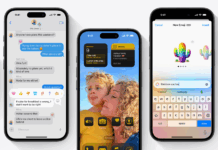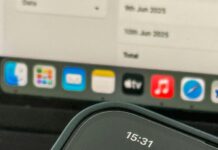Apple is very restricted when it comes to portability and accessibility. Even getting your data in the form of Pictures and Videos can be a real challenge with iOS devices. Another device can only access the iPhone and iOS, like a computer only, via Apple-prescribed tools like iTunes. Also, scrapping the data out of your iPhone can be tricky. Using iTunes, one can back up all the data of their iOS devices into a Macbook or Windows PC. You can restore and locate iPhone backups on your computer using this guide.
Apple’s smartphone series, the iPhone, is renowned worldwide for its performance, durability, time/space efficiency, operating system (iOS), and picture quality. However, these are the pros of having an iPhone. Regarding cons, Apple products are known for their rigid accessibility and customization options. iPhones are not as customizable as Android phones. iOS devices can not be tweaked or molded to the user’s preference, making them more secure. IOS devices perform with the same efficiency even after five years of use. Part of the reason is that there is no support for external file formats or files. Getting a document on an iPhone’s internal storage is a full-time job, let alone getting pictures from someone not taken on the phone itself.
The iPhone 15 and iPhone 15 Plus:
Currently, the latest iPhone in the market is generation 15. The iPhone 15 Pro Max is the most expensive and has unique features and specs. The iPhone 15 Pro has a 6.1-inch display screen. It’s a Super Retina XDR, the best OLED display screen yet. In contrast, the iPhone Pro Max comes with a 6.7-inch display screen. Both are running on the latest A17 Pro processor with 16-core neural engines, 6-core GPUs and 6-core CPUs. A ceramic shield protects the front. The camera of the iPhone 15 Pro is 48 Megapixels with a digital zoom of up to 15x. It is the highlight of the phone.
The basic iPhone 15 series has two smartphones: the iPhone 15 and iPhone 15 Plus. They come in 5 colors: black titanium, white titanium, natural titanium, and blue titanium.
The iPhones of the 15 series come with an A17 chip. They have a dual-camera system that has 48 megapixels and an ultra-wide lens, which allows up to 25x digital zoom. All the new iPhones and iPads are running on the latest iOS 17.1.3 operating system.
Backup and Restore iOS device via iTunes on Macbook and Windows PC:
There are two official ways to back up and restore iOS devices. You can also back up all your data on iCloud. This is impractical, as users have just 5 GB of cloud storage. One cannot back up all their pictures and videos from a phone of 128 GB into a 5 GB cloud. The more practical option is using iTunes on either your Macbook or Windows PC. The only down point of this method is that it requires a computer. Well, when you use iTunes to back up your iPhone on a Macbook or Windows PC. The backup of your phone is stored in your computer’s hard drive. In this guide, we will locate the iPhone backup present on your Macbook or Windows PC.
These backups are saved on the computer after you factory reset your iPhone. Delete all the data and reset all the settings. Then, you can connect your iPhone to your computer again and restore the data on your iPhone. Your phone will perform like it is brand new, and the information you stored in it over the years will be right there.
Furthermore, a factory reset is the best option to solve any software problem that you are having on your iPhone. This method is used on iOS devices to solve 90% of software issues, and it works. So if the (power off and then power on) solution doesn’t work. Your last option is to back up your iPhone on your computer. Factory reset it and deleted all the data. Once done, connect it again to your computer and restore it.
- Moreover, if you are looking for a way to back up and Restore an iOS Device, including iPhone, you can use this guide.
Locate iPhone Backup on a Macbook or Windows PC:
If you made a backup of your iPhone on your Macbook or Windows PC using iTunes, moving on. The files on your iPhone must be present on your computer. Using this guide, we will locate the iPhone backup on your computer.
There is a catch, though, to access the visible and working backed-up files—for example, a picture that opens up even on your computer. In addition, while making the backups, you must have unchecked “Encrypt Local Backup.”
Locate iPhone’s Backup on Windows:
Using this guide, you will be able to track, manage, and locate an iPhone backup performed via iTunes. To find the files of an already backed-up iPhone on your Windows PC, follow the steps below.
- In the search bar, present on the taskbar of your Windows PC.
- Enter either %appdata% or %USERPROFILE% and search.
- The search will present you with the folder. In these folders, look for a folder named Apple. On this folder, navigate to MobileSync and then to backup.
- Here are the backups of the iPhones or iPads that you backed up on this specific computer using iTunes.
- You will find all your data in these folders, including pictures, videos, notes, and contacts.
Locate iPhone Backup on Macbook:
Suppose you used a Macbook to back up your iPhone or iPad using iTunes. Following the steps below, you can find and manage the backups of your iOS devices on your Mac.
I am using the search icon in the menubar.
Copy the following text: ~/Library/Application Support/MobileSync/Backup/
Now, your Macbook will open the folder to find all the backups of the devices you synced and backed up on your computer.
To manage or delete backups on your Macbook or Windows Computer, use iTunes. Manually working with the backups might corrupt the files or make them unreadable by iTunes, so take great care while dealing with the backed-up files and folders.
I hope this guide helped you find, manage, and locate iPhone backup on a Macbook or Windows PC. Suppose you have any questions regarding the guide above. Feel free to drop a comment below, write to us using the Contact Us email, or drop us a message on our social media accounts if you would like to add to this guide that I missed. We would love to hear from you.

















